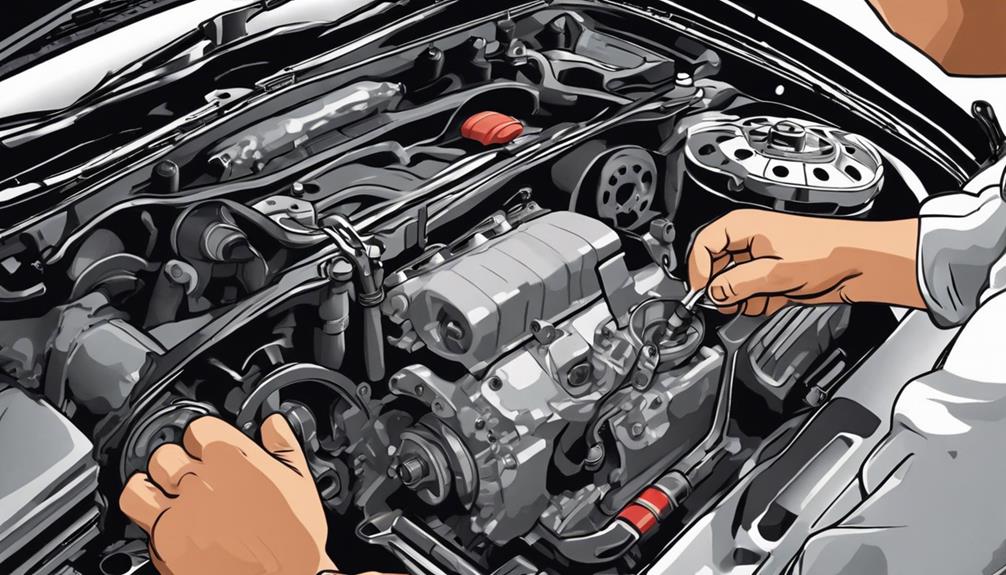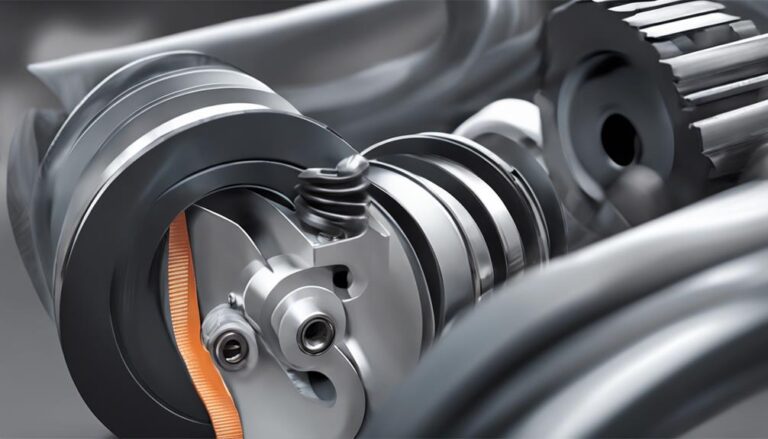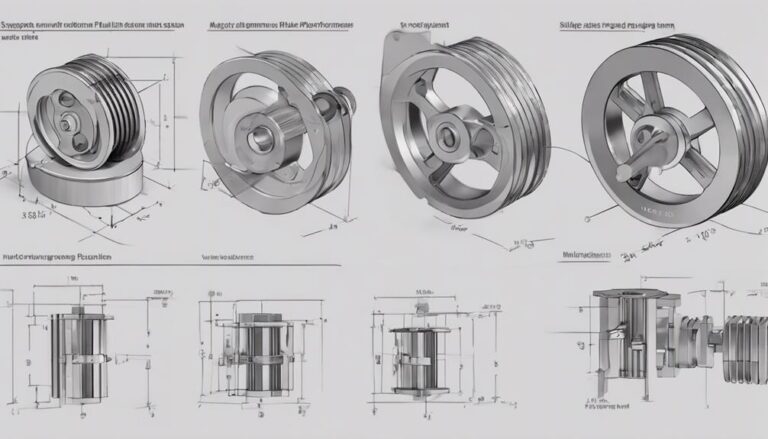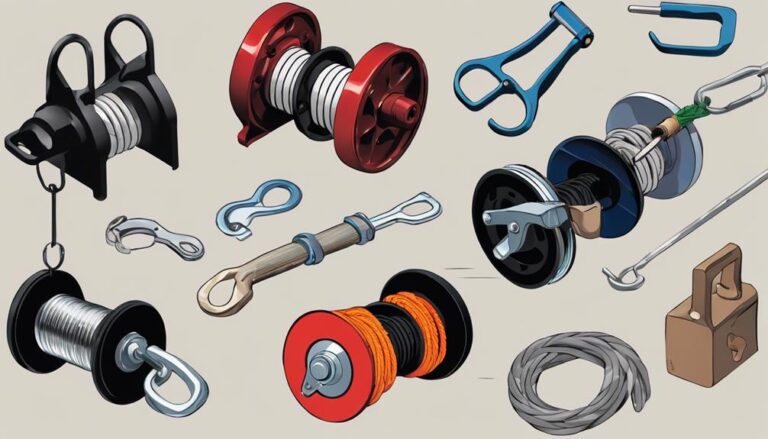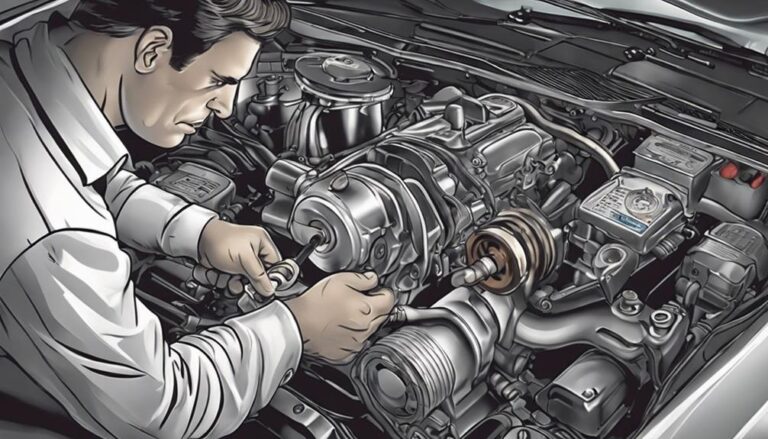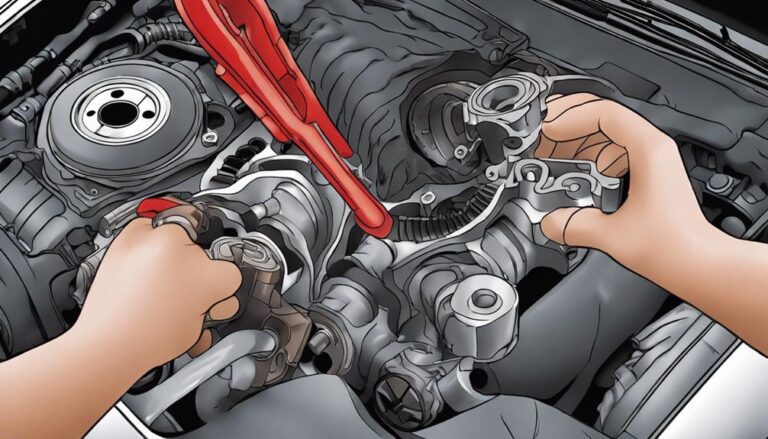Ensuring Proper Car Maintenance for Pulleys and Belts
Have you ever considered the silent heroes under your car's hood? Pulleys and belts play a vital role in keeping your vehicle running smoothly. Neglecting their maintenance can lead to unexpected breakdowns and costly repairs.
But fear not, a few simple steps can help you make sure these components are in top condition. By understanding the importance of regular inspections and timely replacements, you can save yourself from potential headaches down the road.
Remember, a well-maintained car is a reliable one.
Key Takeaways
- Regular inspections of pulleys and belts are crucial for optimal engine performance.
- Cost-effective maintenance practices include timely replacements and proper tension adjustments.
- Enhanced engine performance is achieved through optimized tension and alignment of pulleys.
- Safety benefits derive from maintaining proper tension and alignment, improving overall reliability and efficiency.
Importance of Regular Pulley Inspections
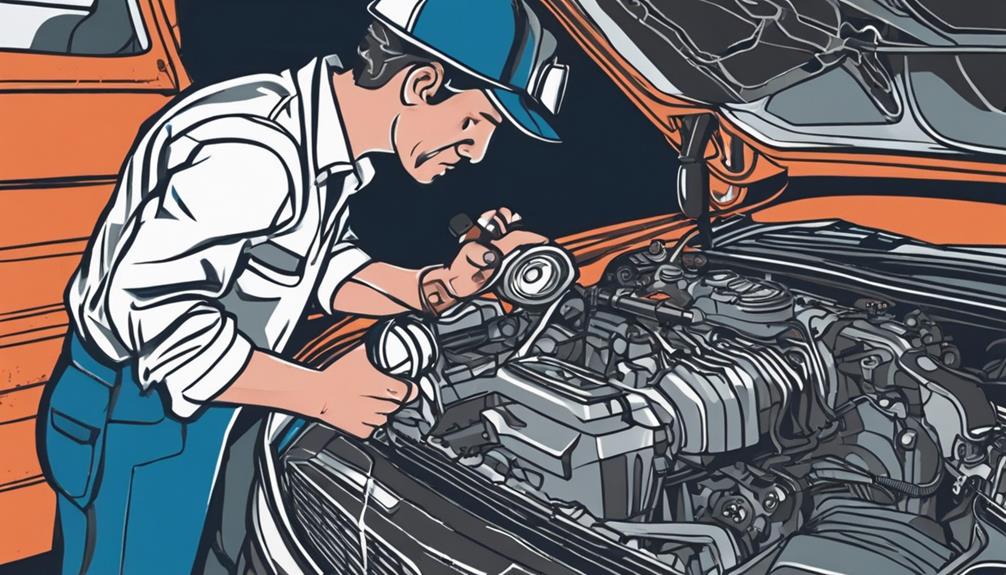
Regular inspections of pulleys are important to guarantee top performance and prevent potential breakdowns in your vehicle. Pulleys play a vital role in the proper functioning of your car's engine system. One key aspect to check during these inspections is pulley wear. Over time, pulleys can wear down due to friction caused by the rotation of belts. It's essential to look for signs of wear, such as cracks, chips, or uneven surfaces, as these can lead to belt slippage or even complete failure.
Another critical factor to take into account during inspections is belt tension. Proper belt tension is necessary for the pulleys to operate efficiently. If the belts are too loose, they may slip on the pulleys, causing wear and reducing performance. On the other hand, if the belts are too tight, they can strain the pulleys and lead to premature failure.
Regularly checking and adjusting the belt tension will help maintain the best performance of your vehicle's pulley system, ensuring a smooth and reliable driving experience.
Extended Lifespan of Serpentine Belts
Inspecting the serpentine belts regularly can greatly extend their lifespan and guarantee peak performance of your vehicle's engine system. Proper maintenance guarantees the belt tension is within manufacturer specifications, preventing slippage and premature wear. Additionally, choosing high-quality belts known for their material longevity can notably increase the interval between replacements.
Here are some essential tips to help you maximize the lifespan of your serpentine belts:
- Monitor Belt Tension: Regularly check and adjust the tension to ensure peak performance and prevent excess strain on the belt.
- Choose Quality Materials: Opt for serpentine belts made from durable materials to enhance longevity and resist wear and tear.
- Inspect for Wear: Routinely examine the belt for signs of cracking, fraying, or glazing, and replace if any issues are detected.
- Follow Manufacturer Recommendations: Adhere to the manufacturer's guidelines for belt replacement intervals and maintenance schedules to keep your serpentine belts in top condition.
Prevention of Costly Repairs
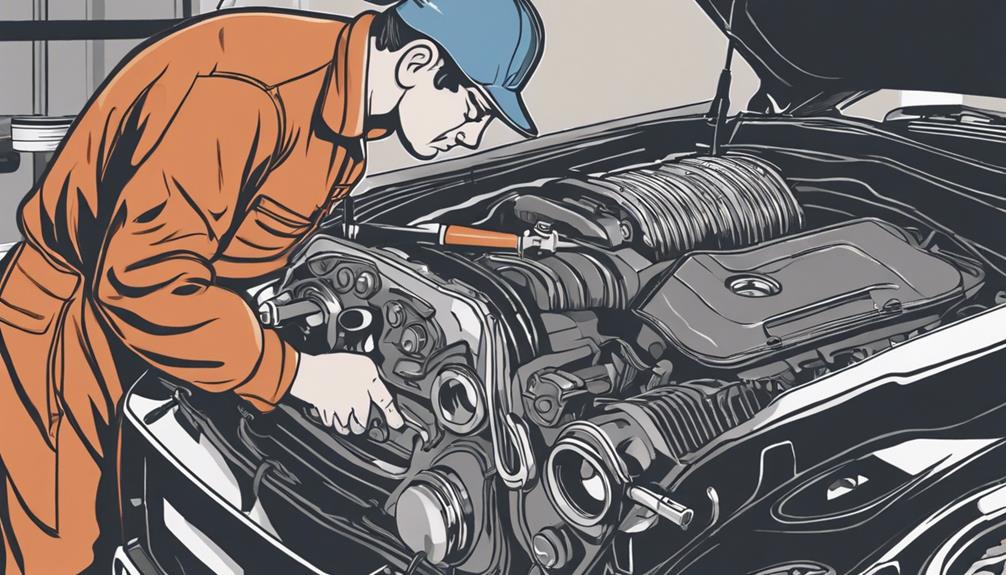
To prevent costly repairs, meticulous attention to the maintenance of your vehicle's pulleys and belts is crucial. Cost-effective strategies can greatly reduce the risk of unexpected breakdowns and expensive fixes. One preventative measure is regular inspection of the pulleys and belts for signs of wear, such as cracks, fraying, or misalignment.
Timely replacement of worn-out components can prevent more extensive damage to the system, saving you money in the long run. Additionally, ensuring proper tension in the belts and alignment of the pulleys can help prevent premature wear and tear. Using high-quality belts and pulleys can also contribute to the longevity of these components and reduce the likelihood of costly repairs.
Regularly cleaning and lubricating the pulleys can prevent debris buildup and excessive friction, further extending the lifespan of your car's pulley system. By following these preventative measures and adopting cost-effective strategies, you can maintain your pulleys and belts in excellent condition, avoiding unnecessary expenses associated with repairs.
Enhanced Engine Performance
For enhanced engine performance, optimizing the tension and alignment of your vehicle's pulleys and belts is essential. Proper maintenance of these components can lead to improved fuel efficiency and increased horsepower. To achieve these benefits, consider the following:
- Tension Adjustment: Ensuring the correct tension in your belts prevents slippage, which can waste energy and reduce efficiency.
- Alignment Inspection: Misaligned pulleys can cause uneven wear on belts, affecting their performance and the overall efficiency of the engine.
- Regular Maintenance: Scheduled checks and adjustments of pulleys and belts can help maintain peak performance levels and prevent issues before they escalate.
- Quality Components: Investing in high-quality belts and pulleys can contribute to improved durability, reducing the likelihood of failures that could impact fuel efficiency and horsepower.
Safety Benefits of Timely Maintenance
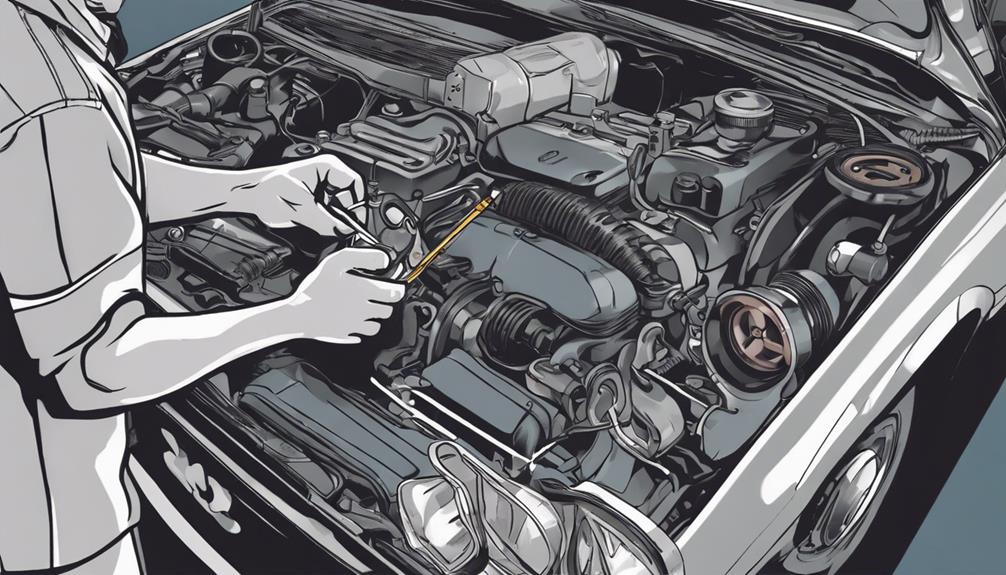
Regular monitoring of the tension and alignment of pulleys and belts is important for ensuring the safety benefits of timely maintenance. By maintaining proper tension and alignment, you can greatly improve the efficiency of your vehicle's pulley and belt system. This directly translates to reduced accidents on the road, as malfunctions due to improper tension or misalignment can lead to sudden breakdowns or failures while driving.
Additionally, ensuring that the pulleys and belts are in good condition increases the overall reliability of your car, minimizing unexpected downtime that could result from avoidable issues.
Timely maintenance not only enhances the performance of your vehicle but also plays an important role in keeping you safe on the road. It's essential to prioritize regular checks and adjustments to prevent potential accidents and maintain the best functioning of your car's pulley and belt system. Remember, a well-maintained system not only boosts efficiency and reliability but also contributes to a safer driving experience for you and others on the road.
Frequently Asked Questions
How Often Should Pulleys Be Lubricated to Ensure Optimal Performance?
To keep your pulleys performing their best, make sure to lubricate them according to your car's maintenance schedule. Regular lubrication guarantees peak performance and longevity, so follow recommended intervals for the best results.
Can Using Aftermarket Belts and Pulleys Affect the Lifespan of the Components?
When it comes to aftermarket quality, be cautious. Using incompatible belts and pulleys can impact performance and even void warranties. Verify components are compatible to safeguard lifespan and prevent unexpected setbacks down the road.
Are There Any Common Signs or Symptoms That Indicate a Pulley or Belt May Be Failing?
If your car shows signs like unusual noises, poor performance, or irregular wear patterns upon visual inspection, your pulley or belt might be failing. Addressing these issues promptly can prevent major problems.
What Are the Potential Consequences of Neglecting Pulley and Belt Maintenance?
Neglecting maintenance on pulleys and belts can lead to severe consequences. The lifespan of these components decreases, risking sudden failure. Aftermarket components may not perform at their best if regular care is ignored, impacting overall vehicle reliability.
Is It Necessary to Replace All Pulleys and Belts at the Same Time, or Can They Be Replaced Individually as Needed?
When considering pulley and belt replacement, it is not always necessary to replace all at once. Replacing only what is needed can lead to cost savings. However, replacing all components can guarantee top maintenance and efficiency.
Conclusion
In the end, keeping up with regular maintenance for your car's pulleys and belts is essential for ensuring top performance and safety.
By inspecting pulleys, replacing serpentine belts, and addressing issues promptly, you can prevent costly repairs and extend the lifespan of your vehicle.
So, ask yourself: isn't it worth the effort to maintain these important components for a smoother and more efficient driving experience?

